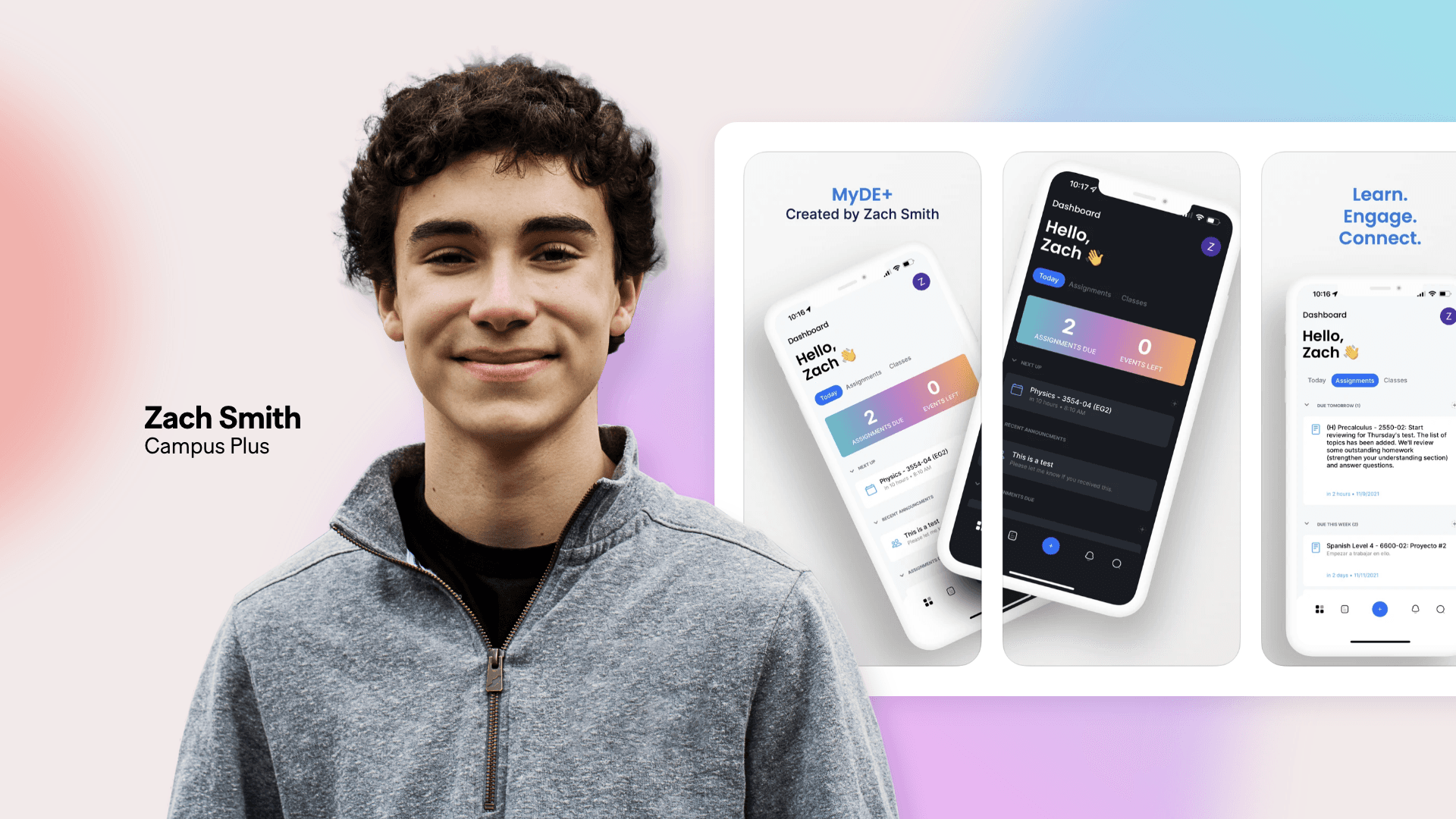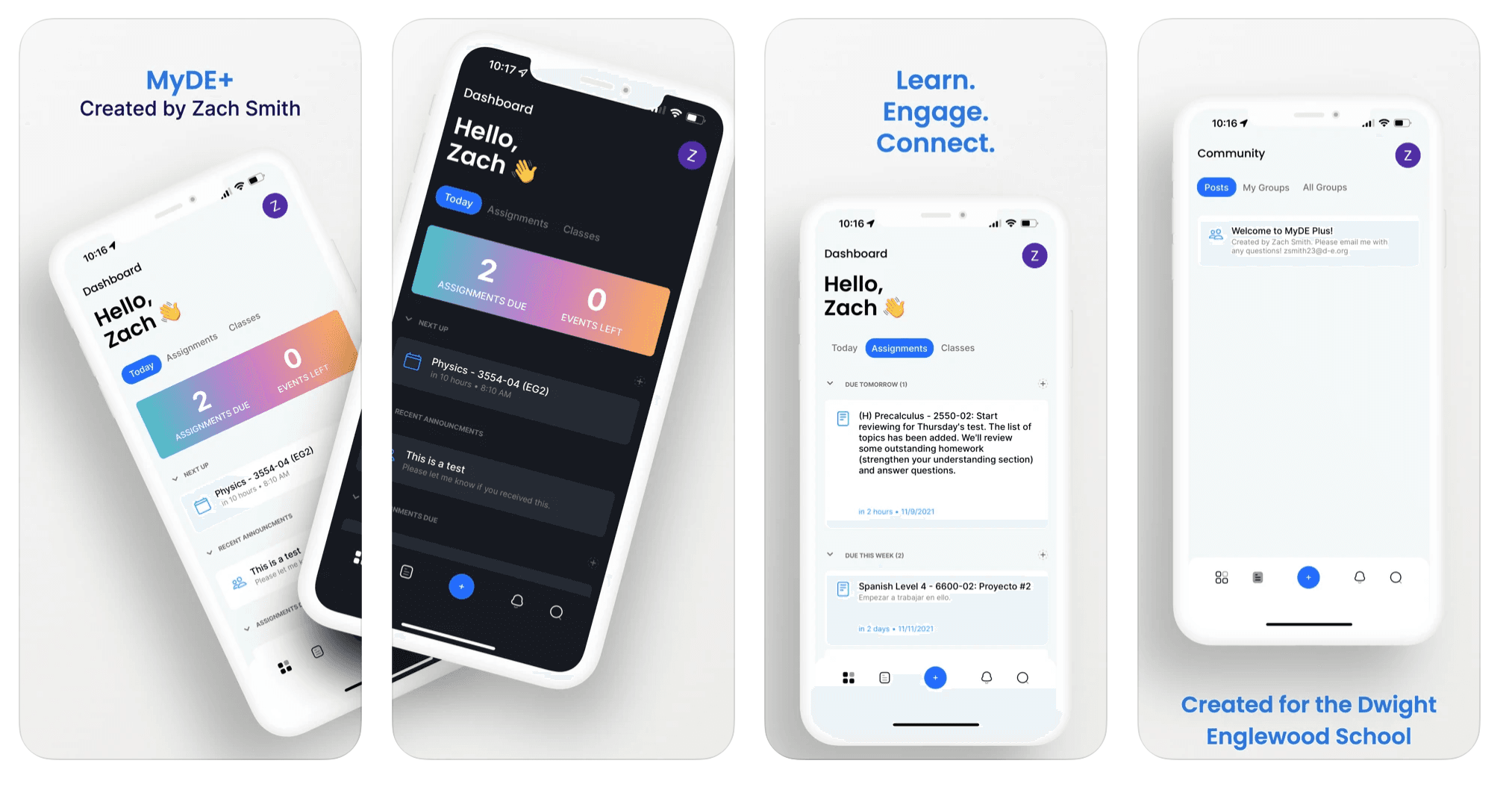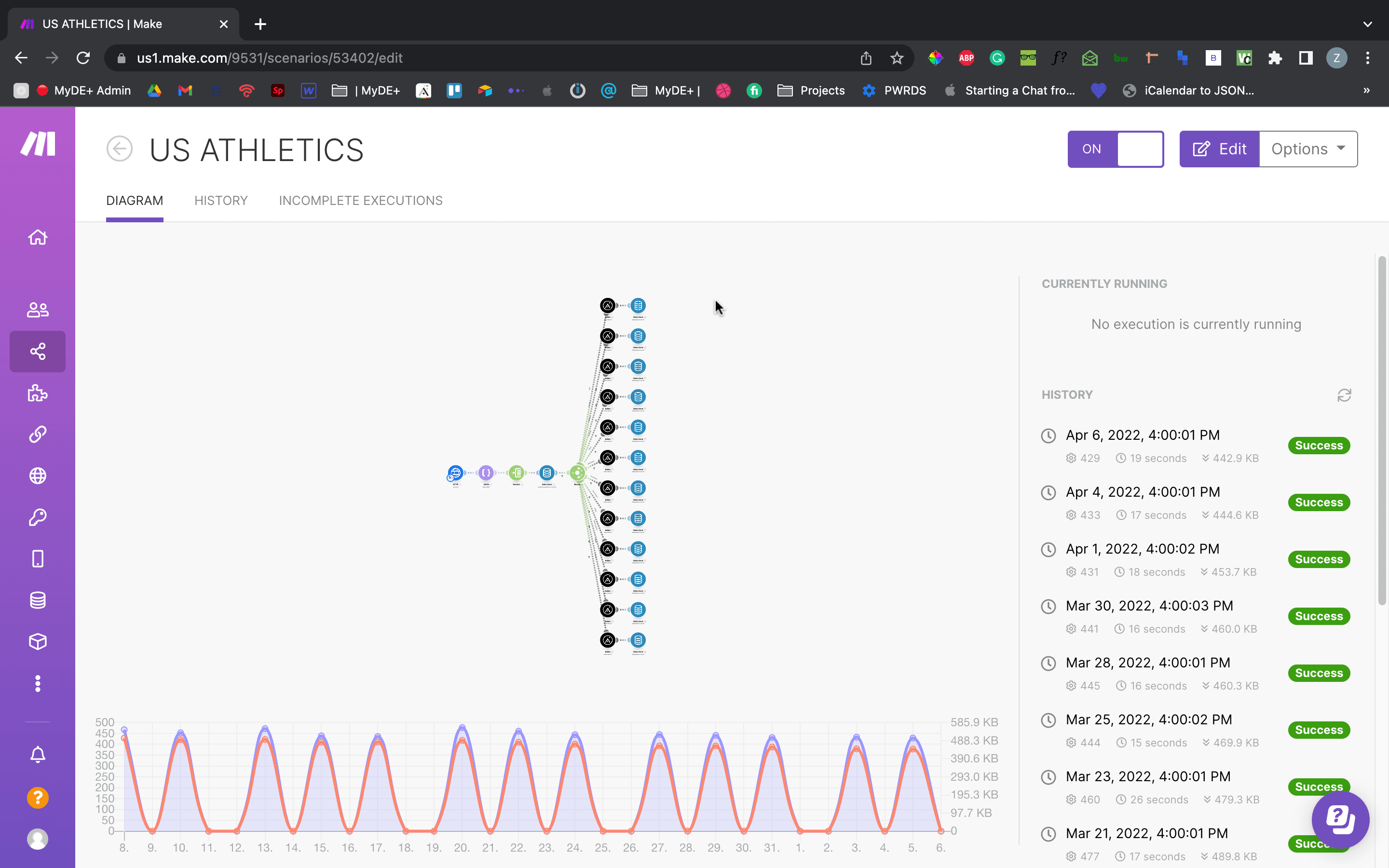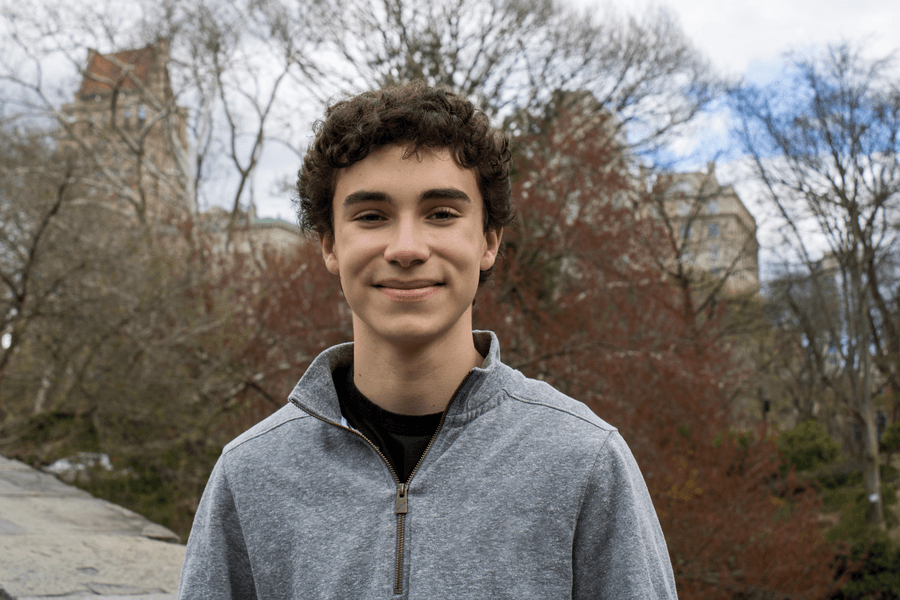May 26, 2022
How a 17-year-old Used Make to Build an App For His Entire School
Teenagers these days… build apps that revolutionize their school system #WithMake.

Zach Smith isn’t your typical 17-year old. As a Junior in high school, he has already accomplished a feat that most young professionals merely dream of doing: Building an app that’s being used by hundreds of people.
Like every other student at his high school, Zach was tired of having to look up his assignments and schedule on his laptop every day.
But unlike everyone else, he decided to do something about it: Building a mobile app that could display their assignments and schedule.
Surprisingly, Zach isn’t a coding prodigy who already has a full ride to MIT or Stanford. In fact, he doesn’t even know how to code.
Armed with a creative mindset, the visual automation platform Make, and the no-code app builder Adalo, he was able to build an app that his classmates use as much as TikTok and Instagram.
Zach’s quest to modernize an outdated school system
At most high schools in America, students use a learning management system to check their schedule and homework assignments. But since a lot of these platforms don’t offer a mobile app, accessing them can be quite clunky.
“The idea behind my app Campus Plus was that when kids wanted to check their homework assignments or their schedule, they had to go on their computer and login to the platform every time,” says Zach. “That was really the problem I was trying to solve.”
In only 18 months, Zach has more than solved this problem. Campus Plus pulls all the necessary data from his school’s learning management system, which has provided a far better experience to his classmates and helped his school get up to date with how their students operate. In turn, it has boosted their attendance and grades.
Zach first thought of the idea for Campus Plus in the midst of quarantine, when he first started exploring the world of UX design. He was already dabbling with the interface design tool Figma, so he decided to build his first prototype of Campus Plus in it.
Soon enough, Zach was in a room with the principal and dean of his school, pitching his prototype. They were so impressed with it that they asked Zach when the school could start using his app.
“I don't think they really understood that this was a Figma prototype,” says Zach. “It wasn't a real app yet.”
Building the front-end of Campus Plus
Zach immediately got to work. He spent the next month figuring out whether he should learn how to code or hire a developer. He soon realized that the former would take too much time and the latter would cost too much money.
As a result, Zach started exploring the no code tool market. He booked meetings with account managers at ten different companies, learning each tool’s functionality. Eventually, he partnered with Adalo because it was the most intuitive. Within the next month, he had a working prototype of the app’s front end in the no-code app platform.
Zach’s biggest hurdle – integrating his app with his school’s learning management system
Zach pitched the prototype to his school’s principal, head of communications, and head of technology soon after. They loved it, but, unfortunately, they also threw a huge roadblock in his way. The head of technology wouldn’t give Zach API access to his school’s learning management system.
“I just kept thinking to myself, ‘How am I going to pull all this data from our learning management system into my app?’” says Zach. “That was really the biggest problem I had.”
For the next three months, Zach toiled over how he was going to integrate his school’s learning management system with his app. He had access to every student’s iCalendar feed URLs from the learning management system, which contained their schedules and assignments. He also figured out a way to convert that data into a format that was compatible with Adalo.
But in order to automate the conversion of the iCalendar data and the transfer of it into Adalo, he needed to connect his school’s learning management system with Adalo. Otherwise, he would have to do all of the work manually.
Zach initially took a stab at it with Zapier, but the platform couldn’t do the job. Luckily, he stumbled upon Make. And after a few hours of playing around with the platform, he was able to connect the apps and build the exact automation he needed.
“That was my lightbulb moment,” says Zach. “Everything came together right after.”
Using automation to take Campus Plus to the next level
With Make, Zach uncovered even more possibilities for his app that he never even thought of before. He could display and update the school’s lunch menu, calendar, athletics schedule, and newspaper and send students confirmation emails when they sign in. He was truly turning his app into a one-stop-shop for checking anything related to life in high school.
Zach also created community pages where clubs and sports teams can post updates. Additionally, students can check into school when they have a free period, update the administration when they get a Covid test at school, and track their attendance. The school’s administration can send push notifications to all students, too.
“What started out as solving a core problem of not being able to check your homework has evolved into solving all these other problems that my school has,” says Zach.
Launching Campus Plus to an entire high school
Zach made an announcement about Campus Plus at a school assembly, where over 300 people downloaded the app. He then hosted 20-minute onboarding sessions with each grade at his high school over the course of a month, making sure everyone knew how to use Campus Plus to its fullest potential.
Today, over 500 people use Campus Plus, which is basically the entire upper school (11th and 12th grade). And it’s been a smashing success with both the administration and students.
“The administration was excited and impressed. I mean, if they hired a company to build an app like this, it would probably be super expensive,” says Zach. “My classmates have also really enjoyed using the app. You can check your assignments and schedule in a pinch. The push notifications have been super helpful, too. High school kids don’t really check their email. It’s way easier to communicate with us now.”
The future of Campus Plus
Even though Campus Plus has been a hit at Zach’s high school, he doesn’t plan on stopping there. Like a true entrepreneur with a Maker’s mindset, Zach has been iterating and improving Campus Plus ever since its release.
In the next version of the app, students will be able to filter their assignments by due date and class and mark them as complete, which will trigger a fun confetti animation. Zach is also adding a directory where students can search for someone and see their availability on Google Calendar.
Eventually, Zach wants to white label Campus Plus and sell it to other schools that use the same learning management system as his school.
“That’s the next step,” says Zach. “Hopefully, I can turn it into a business”.
Zach Smith: The Next Trailblazer in EdTech?
Whether or not Zach starts selling Campus Plus to other schools, it doesn’t matter. Because building and launching the app has carved a promising path ahead of him—and for the EdTech industry.
“After graduation, I want to study interactive design and then work in the education technology field,” he says. “I want to build a startup that does something meaningful”.
Zach’s story proves that when it comes to updating outdated systems, arming yourself with a creative mindset and a visual automation platform can enable you to think outside of the box and build inventive solutions.
In other words, you’ll be able to do what Make was made for: Innovate without limits.
Ready to make the automation revolution happen?

Clifford Chi
Content marketing writer at Make. Passionate about storytelling and creativity in B2B marketing. In my free time, I love to surf, play guitar, and watch baseball.



